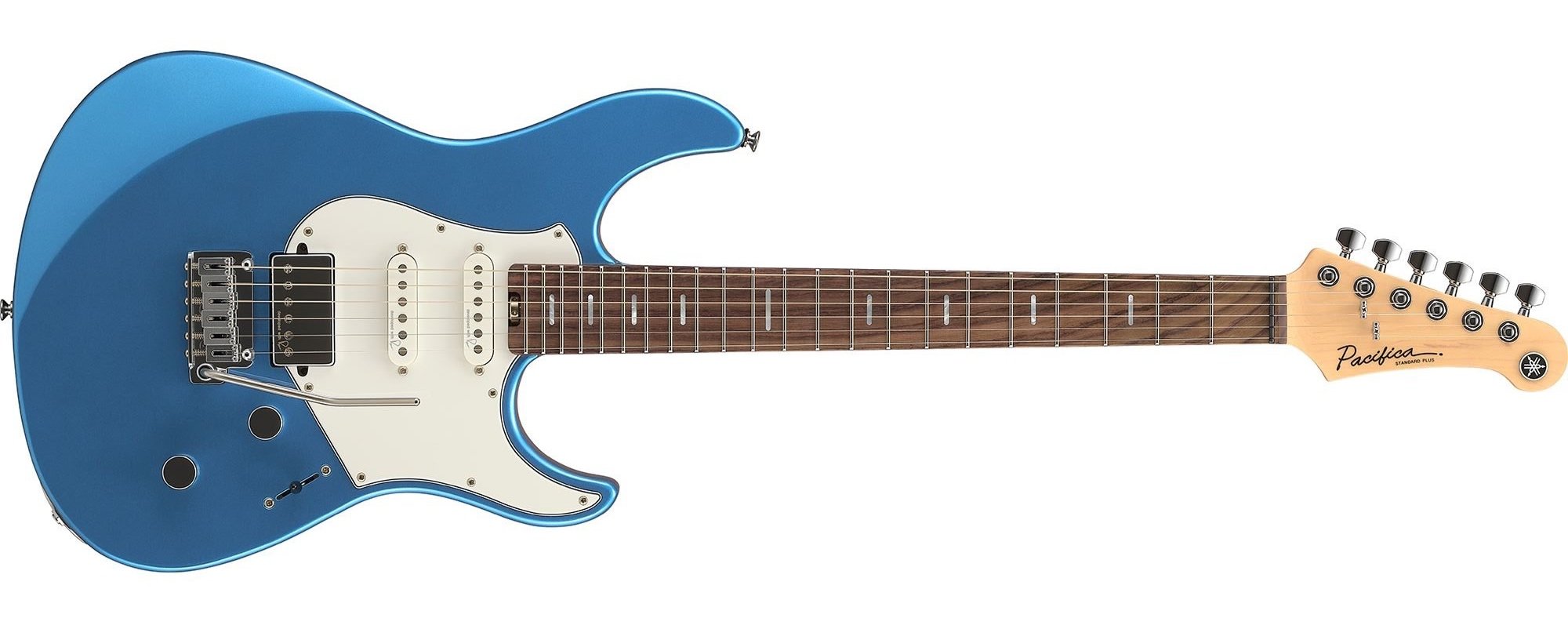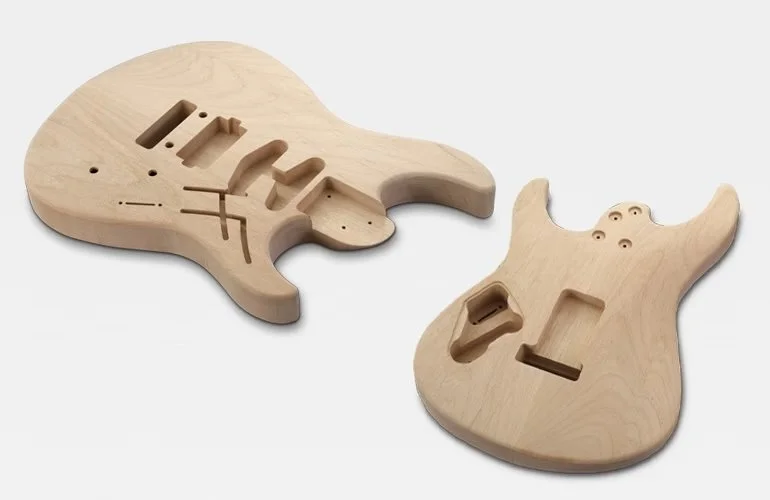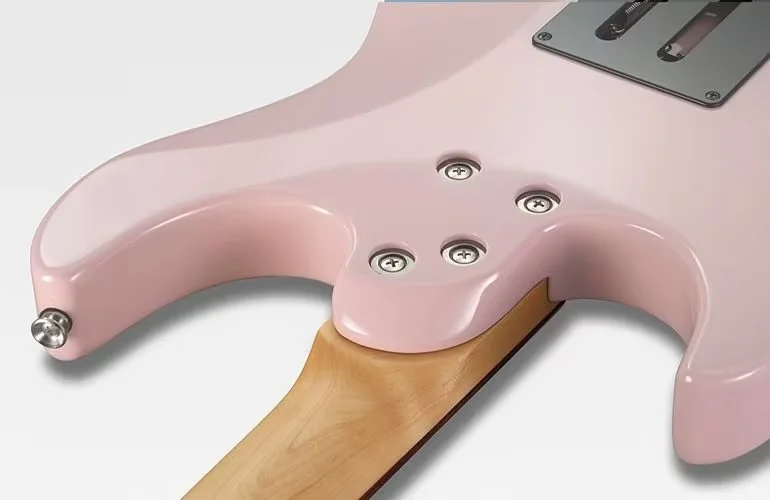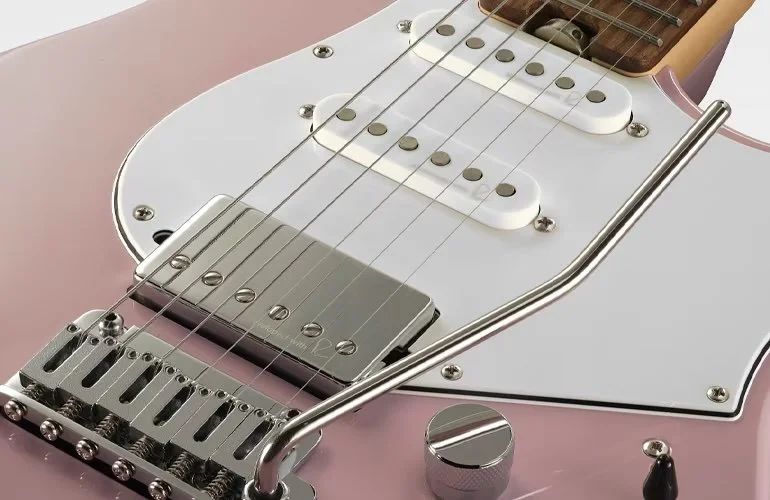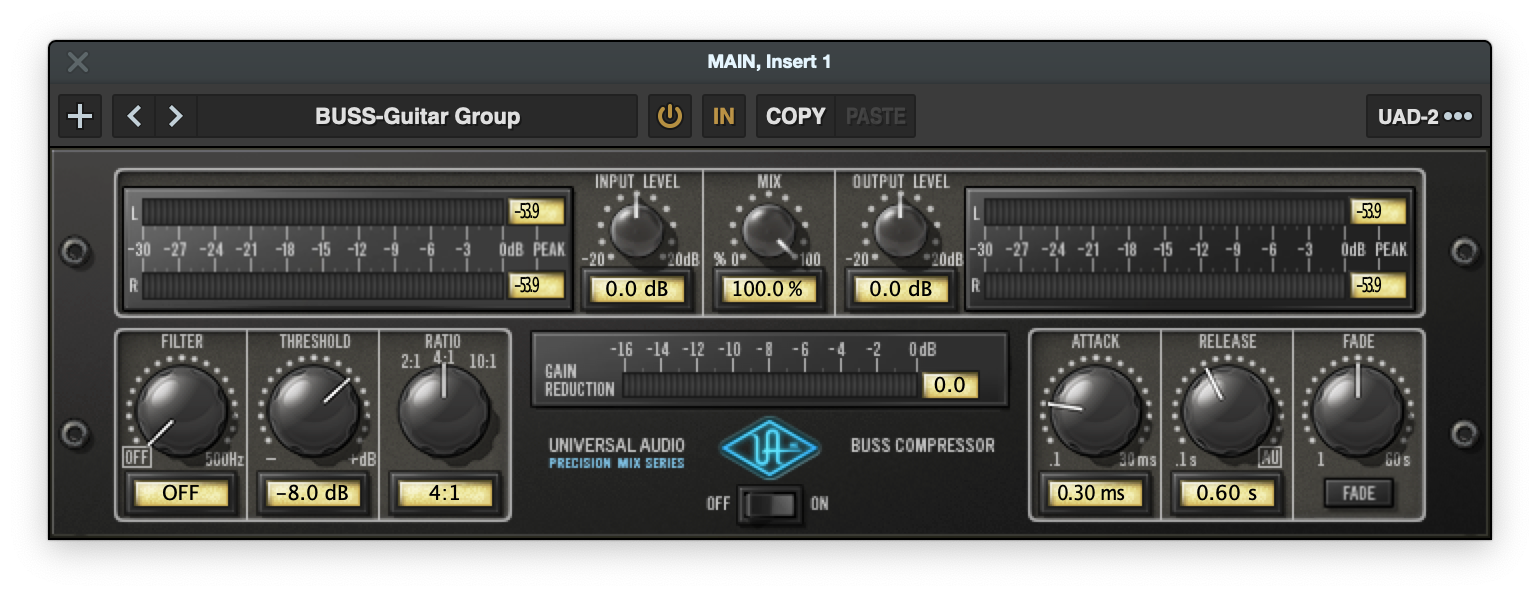Yamaha Pacifica Standard Plus
It always amazes me that while Yamaha is one of the largest musical instrument makers in the world and has been around for nearly a hundred years, that when you go online or into a store looking for an incredible guitar of superior build, playability and value for the money, the most common response forgets Yamaha.
This is the newest iteration of the Pacifica, this model is called the Pacifica Standard + and is built overseas in Indonesia at the Yamaha factory. It is priced at $1499 CAD MAP including a gig bag and anyone looking for an incredible S style guitar in that budget range would have to be an idiot to not at least try one out.
This review would not be possible without the excellent support of Andrew and his team at Cosmo Music in Richmond Hill Ontario. If you’ve never been, you should make a trip and if you are not located nearby, Cosmo Music offers an excellent online store. Thanks to Andrew for his support of my work.
There is a less expensive iteration built in China and the top of the line Professional line built in Japan. I’m going to possibly annoy some very fine people and say that the Japan built version is amazing and I love it, but the regular player, would probably be just fine saving $1000 and getting the Standard +. Yes, it is indeed that good.
Specifications
I’m using the specs grabbed from the web to avoid typos on my part. The M designates the model with the Maple fretboard.
The model I have is in this beautiful Sparkle Blue with the rosewood fretboard. Like their superb pianos, Yamaha brings the science to their design and uses their Acoustic Design Technology to design the right routs and relief to maximize the sound of the guitar body. As you will see, the body wood is alder, and while Yamaha does not specify the variant, my own assessment says it is Red Alder. I could be wrong. Alder is a terrific electric guitar body wood. It tends to be lighter in weight although outliers do exist. The guitar I have is nice and light. Alder has good overall resonance and good sustain when tapped. I am well aware that the cork sniffers love to argue about whether woods matter in an electric guitar body. I studied science and have determined based on data that it does. You do you.
You can see the relief cut into the top where your arm comes over and a nice large belly cut on the back. The contouring of the edges is similar to a rounded edge Ibanez, not as sharp as an RG edge or as rounded over as a Fender edge treatment. I found it perfectly comfortable.
The finish is a beautiful gloss thin polyurethane and is available as Sparkle Blue Burst, Ash Pink, Shell White and Black. The neck joins the body with a nicely sculpted heel joint that makes upper fret access incredibly easy. As it should be. No big blocky neck joints to get in the way.
The neck is made of maple and the truss rod is adjusted via a wheel at the body. I expect the vintage whingers will hate this, but it is massively practical. The fretboard is available in either rosewood or maple and there are 22 medium stainless steel frets. The fretwork is perfect. I prefer stainless steel frets for longevity and durability, and while some claim that they sound different, I cannot hear that and no eq map that I have found shows a difference. If I can get stainless steel at the same price as nickel, I will take stainless steel every time. There are good reasons why high end builds like Suhr and Tom Anderson use stainless steel. The back of the neck is satin and super smooth and the carve is a slim C, slimmer than a 60s style Fender carve but not so flat as an Ibanez Wizard carve. For me with average hands and short fingers, it is very comfortable and even in long playing sessions, my arthritis did not rear its annoying head. Scale length is 25 ½ inches. The fingerboard radius is a comfortable 13 ¾ inches, flatter than a Fender but not a board as on an Ibanez.
The headstock is a nice design and does not add excessive weight. The tuners are the excellent Gotoh locking type. I prefer locking tuners myself and have changed out the stock tuners on many guitars to locking tuners for myself and associates. They make string changes fast and simple and in my opinion improve tuning stability. The nut is Graph-Tech TUSQ which is self lubricating and I think a requirement for any instrument that uses a vibrato tailpiece and non-locking nut.
Electronics
The pickups in this latest Pacifica are a very new thing. I was very curious to see how they would sound. This is because they were co-designed between Yamaha and Rupert Neve Designs. For those who are not studio geeks, Rupert Neve designed and built some of the most successful and well loved studio consoles, preamps and equalizers used on thousands of recordings. As an engineer and producer, I love the very warm and smooth sound of Neve gear, and I was really pleasantly surprised by these pickups.
Yamaha calls these pickups Reflectone. It is an HSS design, where you can split (not tap) the humbucker by pulling up on the tone control. They sound warm and not overly hot so you can run the volume up and not worry about immediately overdriving the input stage on your amp. I tried them into a Fender Tonemaster Blonde Deluxe Reverb and they were fantastic, and then ran the guitar into my Soldano SLO-Mini, a wonderful amp that loves to overdrive and still was able to get a wonderful clean tone if I wanted it. Versatile. That’s the thing.
The neck pickup is the Reflectone HS-7n, the middle pickup is the Reflectone HS-7m and the bridge is the Reflectone HH-7B humbucker. There is a five way switch, a single volume and single tone control. As noted the tone knob can be pulled up to split the bridge humbucker. Here’s a chart of the results of different switch and push pull selections.
It really bugs me when you roll off the volume and the treble vanishes into the aether. The Pacifica Standard + includes a High Pass function on the volume control which reads to me like a treble bleed. I’ve been known to make it a practice to add treble bleeds to guitars that don’t have them, because I use the volume control all the time. For those who just leave it on full all the time, this will not matter much, but particularly with humbuckers, I like to roll off a bit to avoid mud.
It is my opinion that these pickups sound terrific. They are Strat like, but not Stratty, if that makes any kind of sense, with a bit less quack or honk in positions 2 or 4 but a richer bottom end without losing that lovely spark from those positions.
Playability
I’ll keep it simple. The playability of this guitar is fantastic. More comfortable than several of my well loved Stratocasters, which was frankly a surprise, and I would say pretty close to my Suhr Classic. It comes with proper D’Addario strings and that does make a difference. Fender particularly, could stand to spend the nickel and put good strings on the guitars it ships and that would improve first impressions significantly. I found the nines to be fine, although if I owned the instrument, I would probably restring it with my new signature Curt Mangan 8.5 coated set. The balance of the guitar is great, it hangs well on a strap and I did not have to look for the positions of the controls. Lots of intelligence in the design. Some will note that the volume pot is a bit farther from the bridge, than on a Strat, but I did not find this to be an issue, and I am constantly using the volume pot. The knurled knobs are very positive and changes are smooth.
I did not mention the bridge / tailpiece in the specs section because it made more sense here. It’s a proven two post Gotoh 510T which means it is liquid smooth and return to pitch is consistent. The factory tension was set perfectly for me and no tweaking was required.
The guitar arrived without having gone through Cosmo Music’s excellent QC purely due to timing issues and I found a bit too much relief in the neck for my preference. I quick application of my neck relief gauge and a quarter turn tight brought the neck to flat which is how I prefer things. The great thing about that wheel is that truss rod adjustments are fast and easy. The truss rod adjustments are really smooth and there are no covers to remove and no opportunity to grind away the edges of a truss rod hole in a headstock as I have found more times than I would care to on some S shaped and styled guitars.
The frets are finished perfectly with no fret sprout at all. The fingerboard edges are gently rolled, feeling comfortable and played in but not so aggressive as on a Sire S7. The stainless steel frets make bends silky smooth. The rosewood on the fretboard is high quality and while rosewood naturally has a texture, Yamaha has done a really nice job on the finishing. The inlays are very pretty but also nicely subtle.
Example Sounds
I recently got a new channel strip for my recording practice, a plugin that replicates the Helios type 69 preamp used at Olympic Studios in London. This channel strip has been used on tons of very well known records, and I thought it would be a great choice for this guitar where the pickups are not massively overwound. For the examples, I connected the guitar into a short board consisting of a tuner in true bypass, an Effectrode PC-2A Optical Tube compressor, a BOSS Waza Craft Blues Driver, and a Strymon Volante Delay which then went into the Vibrato channel of a Fender Tonemaster Blonde Deluxe Reverb. The DI out from the Tonemaster using the 1x12 cabinet sim built into the amp went to a Universal Audio Apollo Twin X connected via Thunderbolt to an older MacBook Pro. I used UA’s LUNA DAW for the recording.
The Effectrode PC-2A is active for all the examples. I use this as an always on tool. The first section is the guitar with no effects to the amp, using the amplifier’s spring reverb. The second segment is a short phrase with the pickups in switch position 4 first with only the Volante providing subtle reverb and then with the Blues Driver activated with the gain set to noon. The third segment is just an open G Major chord played at each switch position starting at the neck and going to the bridge with the final being with the bridge pickup split.
I set LUNA up so the channel strip was the Helios type 69 in the UNISON slot, so I set to taste before recording and recorded with the Helios type 69 live in real time with no latency. Note that the UA build of the Helios type 69 is incredibly accurate and it can have an audible noise floor. I made a buss with a UA Precision K Stereo Ambience Recovery plugin, and sent the tracks direct to the Main and also sent a 50% value from each track to the buss. In the mastering stage I used a UA Precision Buss Compressor and a UA Precision Maximizer. The tracks were mixed down to an MP3 using VBR. For those interested, I have included screenshots of the settings on my plugins.
Wrapping Up
Ok, I am going to probably annoy some folks here. While I was waiting for this guitar, I had some time to play the latest Fender Player II Stratocaster. It comes in priced lower than the Pacifica Standard + ($1149 CAD MAP) and that new Coral Red is beautiful, more ‘57 Chevy Belair than my own Capri Red Strat. The fretboard work is much better than in the past and I think it is a really fine guitar. Yet, if it was my money going down, I would buy the Pacifica Standard +. For a nominal price difference, I get stainless steel frets, I get a widely proven Gotoh 510T two point vibrato bridge that is smoother and stays in tune more consistently and with what I prefer in the way of saddles, (I am not a fan of the 70+ year old bent steel saddle design) and I get those Yamaha / Neve pickups that I really like the sound of. They are true single coils in the middle and neck, not noise cancelling (or not tone sucking depending on your perspective) so keep that in mind. Is the difference worth the $350? To me it is, without question. Of course, those who live by the headstock decal will go Fender, but to my mind, the Pacifica Standard + is a superior guitar and a better long term buy.
If you want a Pacifica Standard +, please consider going to Cosmo Music to get yours, or buy one online. This shop supports my work by helping me to obtain products for review. It is a real guitar store, with talented folks on hand to help.
If you like what I do here for you, please become a supporter on Patreon. Your monthly contribution makes an enormous difference and helps me keep things going. To become a Patreon Patron, just click the link or the button below. Thanks for your support of my work. I’m Ross Chevalier and I look forward to sharing with you again soon.

